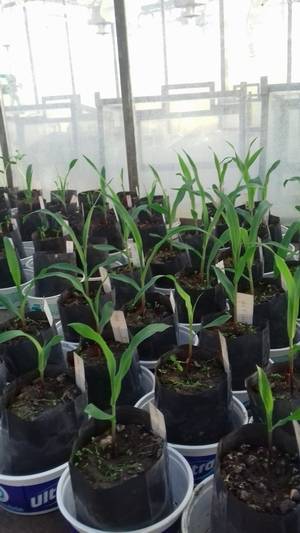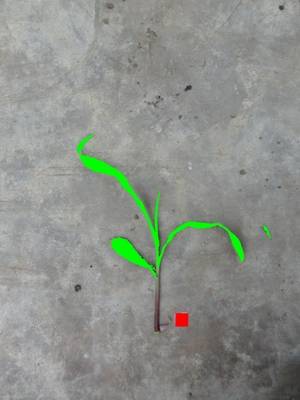Corn Breeding Program of Grain Research Nonprofit Ltd is in the Pannon Breeding GINOP tender
The role of greenhouse experiments in corn breeding.
The stress tolerance and adaptive abilities of corn plants were also tested in greenhouse experiments within the framework of the Grain Research Nonprofit Ltd tender. In the experiment the plants are examined from germ condition (4-5 days after sowing) to 6-7 leaf condition (6 weeks). The capacity of the greenhouse allows for testing of 5 genotypes on a strongly hardened soil type (poor,quality soil) and a good quality , more crumbly, less hardened soil. The second stress factor is water supply. Half of the plants are watered with the optimum amount of water, while the rest of the plants receive only less than half of this amount. At the end of the experiment the height, fresh and dry weight of the plants were measured. During the experiment we also used digital image analysis to automate the experiments in the future. The results may work based on the research so far, which were presented at the Plant Breeding Science Days in March 2019 in Budapest. In 2019 we also researched the photosynthetic ability of plants in collaboration with the Plant Physiology Department at ELTE University.
The main question is whether greenhouse experiments are comparable to field experiments? It would be really useful if the selection of stress-tolerant plants could be speed up by greenhouse testing. In some cases based on the results so far it can be said that there is a correlation but in the greenhouse we can only examine the early development of plants which can provide adequate data on the stress tolerance of plants but no information on fertility which is the most important for growers to know that how many tons of corn a given hybrid can produce. It can be said based on the results so far that the two tests are well complemented and that a field and greenhouse test is needed to characterize the stress tolerance of a hybrid.
1. figure: Corn plants growing in GK greenhouse in March 2018 in Szeged.

2. figure: The result of image analysis of a corn plant in autumn 2018 in Szeged.
